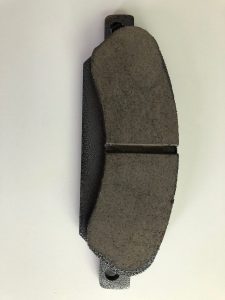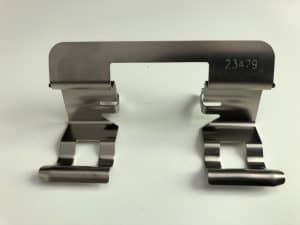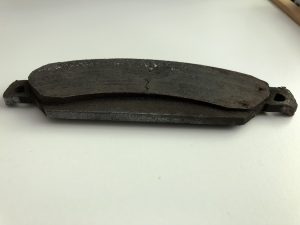Your Kia Sedona‘s braking system is designed to handle thousands of miles of braking with no intervention from you. When its brakes begin to squeak, they are telling you that they need some attention. The most typical cause of squeaky brakes are the brake pads themselves, but there are other issues that can cause the noise as well. The good news is that brake pads are cheap. We’ll cover the most common reasons that a brake system would squeak directly below.
How Your Sedona’s Brake System Works
At the most basic level, the brake system works by using the force that you apply to the brake pedal and converting it to hydraulic pressure (magnified by the engines vacuum at the master cylinder). This pressure is applied to the brake pads (or shoes if it’s drum brakes) and your Sedona slows down. This pressure cause a lot of heat and the parts eventually wear down.
Kia Sedona Squeaky Brakes: Causes
Below you will find the most common causes of squeaky brakes in general.

1: Brake Pads Have Worn Down
The most common cause of squeaky brakes is going to be worn out brake pads.
Disk brakes are found at the front of all modern vehicles, including your Sedona. Depending on what year your Sedona is, and what options it was equipped with, it may or may not have drum brakes in the rear.
With brake pads, they are equipped with something called a squealer. The squealer is a piece of metal that begins touching the caliper when the brakes are worn to a level that they should be replaced. At this level, the vehicle is still safe to drive, but the brake pads should be replaced as soon as possible. If they are not replaced, the brake pads will eventually wear down and you’ll get a metal on metal situation. At this point, it will no longer be a squeak that you’ll hear. Instead, it’ll be a horrible grinding sound.
Shoes are what applies pressure to the drum brakes to get them to slow down the vehicle. With drums, once all of the metal on the shoe is worn off it’ll begin to make a metallic or grinding sound. Bad shoes are tougher to detect before they are worn all of the way down.
2: Anti Rattle Clip

Most modern vehicles have anti-rattle clips. These clips keep the brake pads from bouncing around between the caliper and the rotor when the brakes are not being pressed. If they are damaged or installed improperly, it can cause the brakes to squeal.
If the anti rattle clips are entirely missing, you’ll typically hear a “thunk” noise as they rattle around there. Eventually the brakes will start to squeal without them as they glaze and wear unevenly. There’s more on glazing below. These clips are important. If you have reason to believe that they are damaged or missing, you should replace them.
3: Glazing

Glazing is a condition that happens when the brake pads, shoes, rotors, or drums get too hot for too long. Glazing hardens the contact surface of your pads, and diminishes their overall braking performance. Squeaking brakes are just a side effect of this condition. If you Kia Sedona has glazed brake pads, they need to be replaced.
4: Pad Insulation
There is supposed to be a small backing shim that goes between the brake pad and the caliper. This can become lost or damaged as time goes by. Most vehicles have this. If there is a problem with the shims or pad insulation, it’ll usually occur right after a brake job.
5: Rotors
When the brake rotors get an uneven surface, glazing, or are worn too far down they’ll cause a squeaking sound. Your mechanic can “turn” them, which cuts a new even surface back on to them. Otherwise, if they are worn too far, you’ll need to install new ones.
Conclusion: Kia Sedona Brake Squeak Diagnosis
It can be tough to nail down the exact reason why brakes squeak. The most important safety feature on your Sedona is its ability to stop. Don’t ignore the squeak, and good luck diagnosing it. If there is anything that you would like to add, please feel free to leave a comment below.

